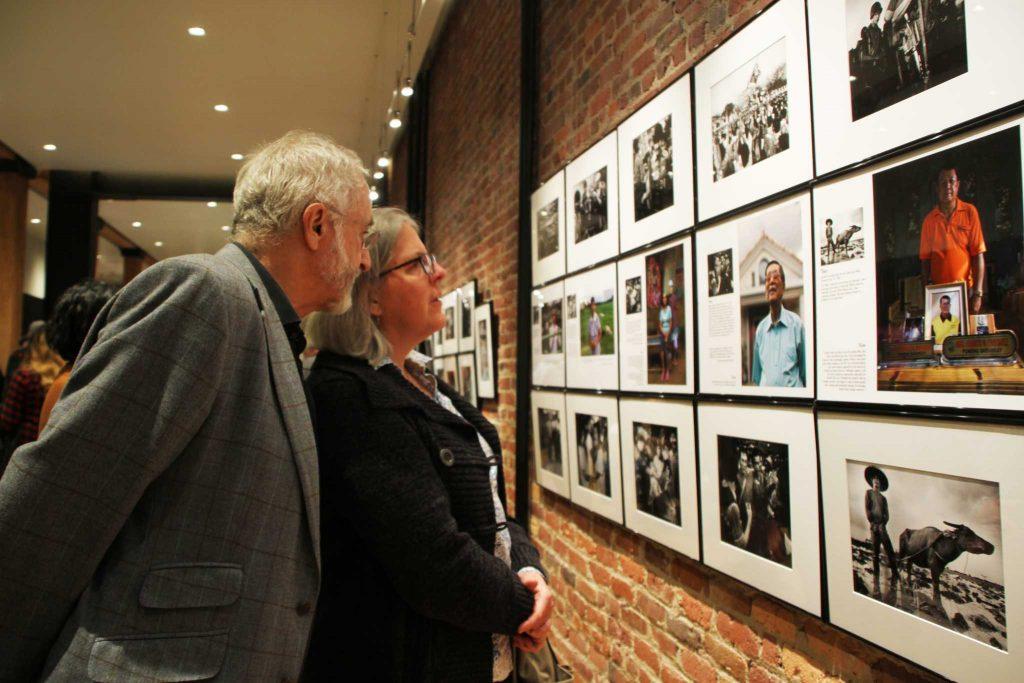Pulitzer Prize winner and SF State assistant professor of photojournalism Kim Komenich celebrated the release of his book “Revolution Revisited” with a photography exhibition and book signing Tuesday at Leica Store San Francisco.
The release comes three decades after Komenich, 59, documented the Philippine People Power Revolution with over 30,000 photographs, earning him the 1987 Pulitzer for Spot News Photography. “Revolution Revisited” details Komenich’s return to the Philippines as he sought to reconnect with the subjects of his photos.
“It was as though we were finishing a sentence we began 30 years earlier,” Komenich said.
More than 100 guests gathered to hear Komenich speak about his years as a San Francisco Examiner photojournalist between 1984 and 1986 and his journeys back to the Philippines during the last five years to retrace his steps. The story is currently being edited into a documentary film that Komenich hopes to finish this year.

Komenich said the opportunity to revisit the scenes from his black and white photographs and the ability to portray the impact of the Revolution 30 years later was a privilege. He reconnected with the impoverished and affluent, from Riza Casarmel, a 10-year-old sugar worker he photographed in 1985 who still lives and works near the same field, to the most affluent of government officials, like the former Filipino first lady and infamous shoe-hoarder Imelda Marcos.
Susan Brown, a hobbyist photographer from San Francisco whose grandfather was Filipino, said she was touched by the history of Komenich’s photography, adding that she was enamored of the art.
“I forgot how rich a film camera (makes) black and white (look),” Brown said. “It’s inspiring me to use my film camera again.”
Komenich said he got his first camera in the eighth grade and began developing photos for newsprint at age 15. He has been fascinated with storytelling and technology ever since.
“One of the things I’ve always really prided myself on is staying up with technology,” Komenich said. “In my mind, there are three things that matter to storytelling. One of them is the story itself. The other is the aesthetic. And then there’s technology. What I look for now when I’m thinking about technology is quality and making sure I have the equipment that gives (my stories) the longest digital life.”
In the vein of modern technology, Komenich funded “Revolution Revisited” through Kickstarter. The project surpassed its $25,000 funding goal on Feb. 17.
Charisma Tomkins, who grew up in the Philippines, said her husband supported the book on Kickstarter and got her a copy as a gift. She attended the event to see the gallery prints in person.
“I was 8 when (the revolution) happened,” Tomkins said. “I remember my folks going for several days. My generation has lived through the transition. I think (the 30th anniversary) is going to be a big thing back home.”
Leica Store San Francisco hosts frequent photography meet and greet events, but Komenich is the first Pulitzer Prize winner to offer an exhibition at the store.
“We are all excited that Leica Store San Francisco can provide (a speaker) with depth and history in the events that have shaped the world and changed countries,” said Wayne Serrano, Leica specialist. “It’s great to be able to showcase that kind of activity.”








